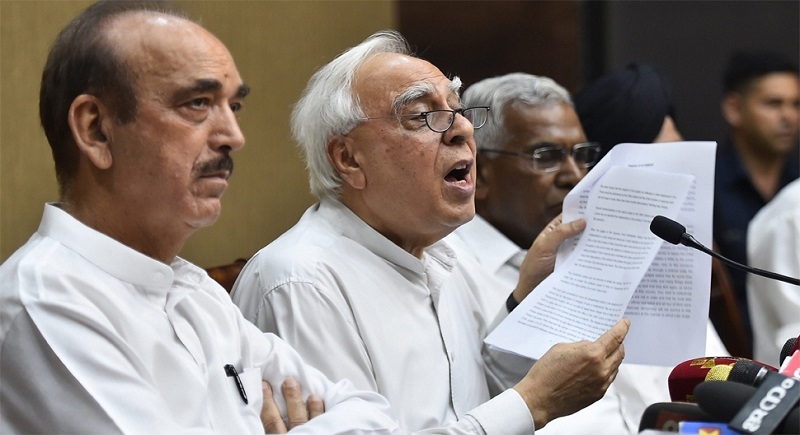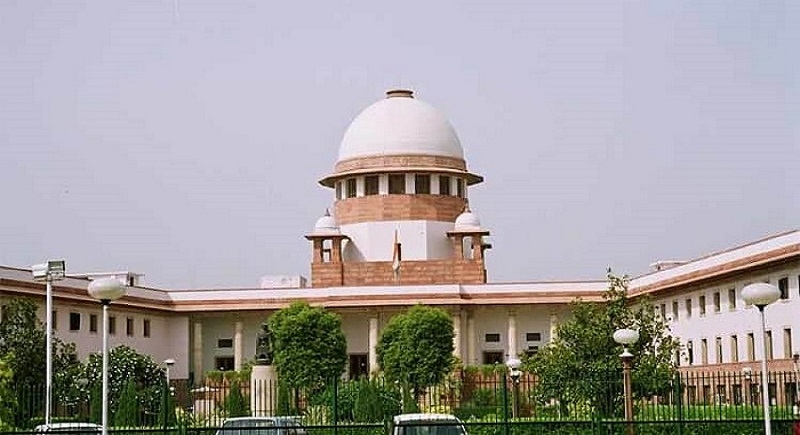Indian Judiciary since 1993: Independent but Unchecked and Unbalanced

Our Constitution makers decided to follow the western model of parliamentary democracy in which there are three main organs of the state, the executive (i.e., the Government run by a council of ministers) and the legislative (i.e., the parliament) and the judiciary (i.e., the system of courts headed by the Supreme Court). Their powers are separated and they are independent of each other. However, this independence is not absolute; it is subject to the “checks and balances” that each is to apply on the other two. A properly functioning state has these three organs countervailing each other in a dynamic equilibrium.
In the ‘S. P. Gupta Vs Union of India: Transfer of Judge’ case of 1981 and subsequently in the ‘Supreme Court Advocates-on-Record Association Vs Union of India’ case of 1993, the learned judges of the Supreme Court (abbreviated to SC hereafter) gave such verdicts that had the effect of taking away all powers from the executive, read the government, to appoint or transfer judges. They vested these powers in a Collegium System created by the SC itself. The Indian Constitution had given these powers to the Parliament which was exercised by the executive appointed by the Parliament. Needless to say, the Collegium System finds no mention in the Constitution.
Any action of the executive, i.e. the Government can be challenged in a court of law, and in case of an appeal, the matter is finally dealt with by the SC; it may uphold the action of the Government or declare it void. Thus, there is a check on the executive that is exercised by the SC. Previously the executive had the powers to appoint and transfer the judges; but now since 1993 the executive has been deprived of that power. Therefore, there is no check the executive can apply on the judiciary.
The legislative (i.e., the parliament) still has one check on the judiciary ‒ it can impeach a judge. But impeachment is an extreme step and the procedure is lengthy and made intentionally cumbersome by our founding fathers, so that no one can bring an impeachment motion frivolously. They intended that the extreme step be reserved for the rarest of the rare case. The judiciary, however, has a check against the legislative, in the sense that the SC can strike down a law passed by the parliament.
The sum total of the current situation is that the legislative, except the extreme step of impeachment, has no mechanism of applying checks and balances against the judiciary, so necessary for smooth day to day functioning of the state.

In an article titled, ‘A Nascent Caste on the horizon: The Judicial Dynasties’, 28 June 2016, News Bharati English, web-link http://www.newsbharati.com/Encyc/2016/6/28/The-Judicial-Dynasties, I had drawn attention to two dynasties, the Thakur dynasty and the Chandrachud dynasty. Since that article was written, the Chandrachud dynasty has been strengthened by the transfer of Justice Dhananjaya Chandrachud from the Allahabad High Court to the Supreme Court. I missed a third one then. The present chief justice of the SC, Justice Dipak Misra is the nephew (son of a brother, to be precise) of a Chief Justice of India, of the previous generation, Justice Ranganath Misra.
For examples of Bhaai-Bhateejaa-vad or nepotism in judiciary, one should see an item, “Allahabad HC (abbreviation of High Court) Judgeship List: It’s All in the Family ‒ One-third of Short-listed lawyers are Related to Judges”, Times of India, March 12, 2018, p.9. This is not the first time that this problem has cropped up. Also In 2016 the bar association of Allahabad had complained and then Chief Justice of the SC, T. S. Thakur rejected more than ten candidates, recommended by the Allahabad High Court, after a check by the Intelligence Bureau.
In a far more serious development, four senior most judges of the SC led by Justice Chalmeswar held a press conference in the national capital in January 2018, and questioned the prerogative of the Chief Justice of India (CJI) to allocate ‘sensitive’ cases to different judges. This public attack on the CJI is unprecedented and against all norms and conventions. Further, it is against the service rules and the code of conduct. Yet, the CJI soft-pedalled the issue and the Government took no step beyond certain ministers making statements of disapproval. This emboldened the erring judges and since then there has been public sniping at the CJI by some SC judges. Consider a hypothetical situation where a cabinet minister questions the prerogative of the Prime Minister (PM) to allocate portfolios; can the Government function if this happens? Even then the PM is said to be the first among equals, whereas the CJI is a rank superior in a definitive hierarchy, entitled to a higher salary.
As a result of all the listed above and many more misdemeanours on the part of judges of various high courts, our judicial system as an institution is losing credibility in the public eye. The Government should make immediate moves to stem the rot. The Government should invoke Article 143 of the Constitution and make a Presidential Reference to the SC to seek clarification as to what remains of the much-vaunted “Checks and balances” that the executive and the legislative wings are supposed to apply against the judiciary, the extreme step of impeachment being an unpractical measure for day to day functioning of the state. The President should ask are the ‘checks and balances’ part of the basic structure of the constitution or not? As of now the judiciary in India is independent but unchecked and unbalanced.
Further, the Government should advise the President to issue a stricture, i.e., a sternly critical and censorious remark, against the four judges, who held the afore-said presser in January 2018, for violation of the Service Rules and the Code of Conduct. Such a stricture would be without precedence, but an exceptional and unprecedented development requires an exceptional response. Such a stricture should enter their service records.
